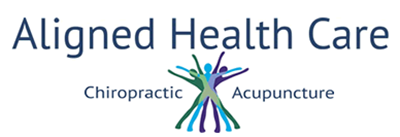Shockwave Therapy
Shockwave therapy is a non-invasive treatment for localized musculoskeletal pain or tendon injuries. It is a relatively new treatment, proven to be highly effective – primarily for sports injuries.
How does Shockwave therapy work?

Shockwave therapy works through the application of mechanical pressure pulses that causes cavitations and bubbles to form in the tendon or soft tissue area– typically areas where the blood supply is not able to reach effectively.
The pulses ‘disrupt’ the tendon or soft tissue, to trigger the body to start to heal itself – a process called revascularization. This makes the tendon more durable, and able to regenerate quickly – bringing better results over the longer term.
It is a safe treatment and an alternative to consider if you are possibly facing the option of a cortisone injection.
Which conditions will Shockwave therapy effectively treat?
Shockwave therapy is for chronic long term injuries that cause serious pain. Typically these are:
- Sports injuries
- Tennis elbow
- Tendonitis
- Plantar fasciitis
- Frozen shoulder
- Achilles tendonitis
- Ankle, knee, shoulder, wrist injuries
Shockwave therapy is popular with tennis players, runners, athletes, footballers and rowers.
Shockwave therapy is NOT suitable for:
- Injuries close to the chest or lung
- Pre-ruptured tendons
- Patients who are pregnant
- Under 18’s – apart from young patients with Osgood Schlatters disease
When would you seek Shockwave therapy?
For a sports person there is nothing worse than when you find yourself not responding to a treatment pathway – this means you cannot train or perform the sport you love.
Usually this scenario happens when a muscle or tendon has been overused. With tendon injuries the blood supply is generally weak, so the body is not naturally repairing.
It is at the point when response to manual treatment has plateaued that we would recommend Shockwave therapy.
Shockwave therapy main features:
- Shockwave therapy sessions take approximately 5 – 10 minutes
- Treatment is a cumulative effect and results are most often felt after 3 – 4 sessions
- How many Shockwave sessions you may need will depend on your pain problem – typical scenario is 3 sessions
- Sessions are usually held 3 – 10 days apart
- Treatment may be uncomfortable with any discomfort usually be symbolic to the pain you are already in
- Typically, patients feel immediate pain relief following treatment but some soreness may occur within 2 – 4 hours. This may last from a few hours to a few days depending upon the severity of your pain problem.
Patients are advised to refrain from physical activity that may involve the treated region for 48 hours following activity.
How does Shockwave differ from ultrasound?
They are different things – ultrasound is for lower grade pain to help reduce inflammation – it has no repair function.
Why do we offer Shockwave therapy at Aligned Health Care?
Aligned Health Care Clinicical Director Ralph Pottie first came across Shockwave therapy attending professional developments courses in the UK and US. As an effective therapy it use was coming to prominance after being extensively used at the 2012 Olympic and Paralympic Games in London and at the European Olympics in Baku.
Using radiology, scans taken of injuries treated before and after Shockwave treatment showed great changes in the vascularization of the tissues treated.
At Aligned Health Care we monitored it performance and the emerging research carefully. Over time it proved itself again and again and we could see how Shockwave therapy would prove a far better option for patients with chronic injuries, where the treatment pathway had plateaued and they were faced with the option of a cortisone injection.
The Shockwave therapy machine at the clinic is the highly reputable Gymna 500. It has been a substantial investment that will reap rewards for the many sports injury patients that we treat at the clinic.
With a reported clinical success rate of 77% – 80% worldwide, Shockwave therapy is fast becoming a treatment of choice for professional practitioners.
